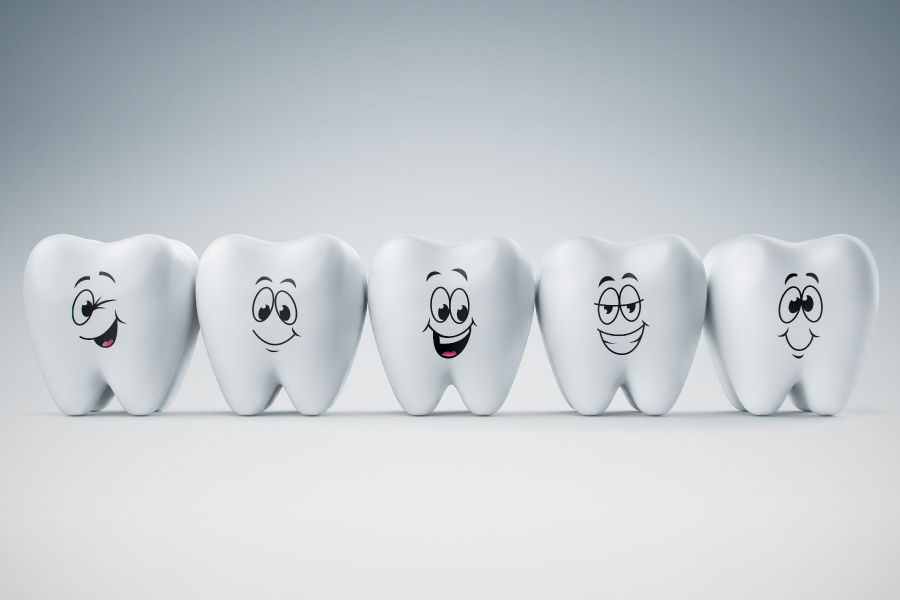Stages Of Tooth Decay & How To Prevent It
September 30, 2021 4:35 pm
Tooth decay is a progressive condition that can lead to tooth loss. But before that happens, there are a few treatments that can save your natural tooth. Let’s take a look at the different stages of tooth decay, and what you can do to prevent it altogether.
What Is Tooth Decay?
Every day, plaque and bacteria grow on the surface of your teeth. As you eat throughout the day, the plaque and bacteria feed on sugars and starches left over on your teeth. They release acid that can damage the tooth’s enamel, or hard outer layer. If you are experiencing any of the following symptoms, you may have tooth decay.
- Toothache
- Sensitivity to hot & cold temperatures
- Dark spots on teeth
- Cavities
The Five Stages of Tooth Decay
Below are the five stages of tooth decay along with treatments you can get along the way to improve your oral health.
- 1. Demineralization
- 2. Enamel decay
- 3. Dentin decay
- 4. Pulp damage
- 5. Tooth abscess
Your teeth are made of minerals that are actively lost and regained every single day. When your teeth demineralize, the enamel begins to weaken and become more porous. At this point, you may notice white spots on your teeth in the areas that have demineralized. If you are in the demineralization stage, use dental products with fluoride. It’s also a good idea to head into Cherry Blossom Family Dentistry for a fluoride treatment to prevent the decay from spreading further.
This is the stage where you will begin to form cavities in your enamel. Cavities appear in the form of tiny black dots on your teeth. Sometimes they may not even be visible to the naked eye. Our team will remove the decay from cavities and fill up the hole with a strong, tooth-like filling to keep your enamel strong.
Dentin is the softer, middle layer of your teeth. Once decay spreads to the dentin, you might experience more sensitivity, especially when you bite down or when you eat hot and cold foods. At this point, your dentist will need to remove the infected tissue from the tooth. You might need either a filling or a dental crown to allow the tooth to heal.
Pulp is the innermost and softest layer of your teeth. It’s where the tooth’s nerve endings reside. By the time decay spreads to the pulp, it is likely down to the roots of the tooth. You might experience extreme pain, bad breath, or changes to the color of the tooth at this stage. Root canal therapy involves flushing out the infected tissue and repairing the natural tooth to prevent the spread of infection and tooth loss.
When the infection has spread beyond the pulp, an abscess might form next to the infected tooth. This is a sign that the infection will continue to spread to the gums and jaws if left unaddressed. Root canal therapy may salvage your natural tooth. It’s also possible that you could require a tooth extraction.
How to Prevent Tooth Decay
You can prevent tooth decay in a few ways. Consistent brushing and flossing is the first step to good oral health. Second, you should maintain a balanced diet that is low in sugars and starches so plaque and bacteria on the surface of your teeth can’t cause as much damage to your enamel. And, of course, you should visit Cherry Blossom Family Dentistry twice a year to make sure your teeth are healthy and strong. In many cases it can be hard to detect the signs of decay on your own.
Affordable Preventive Dentistry in Dallas/Fort Worth, TX
A healthy smile is a beautiful smile! Cherry Blossom Family Dentistry offers general, cosmetic, and restorative treatments for patients of all ages across three different locations in the Dallas/Fort Worth area. You can visit our friendly staff at Cherry Blossom Family Dentistry in Burleson, Highland Oaks Family Dentistry in Keller or Uptown Dental Studio in Dallas. If you’re looking for comfortable, affordable family dentistry, contact us to learn more about our services or to schedule an appointment. We look forward to hearing from you!
Contact UsCategorised in: Dental Care, Family Dental Care, Preventive Dentistry
